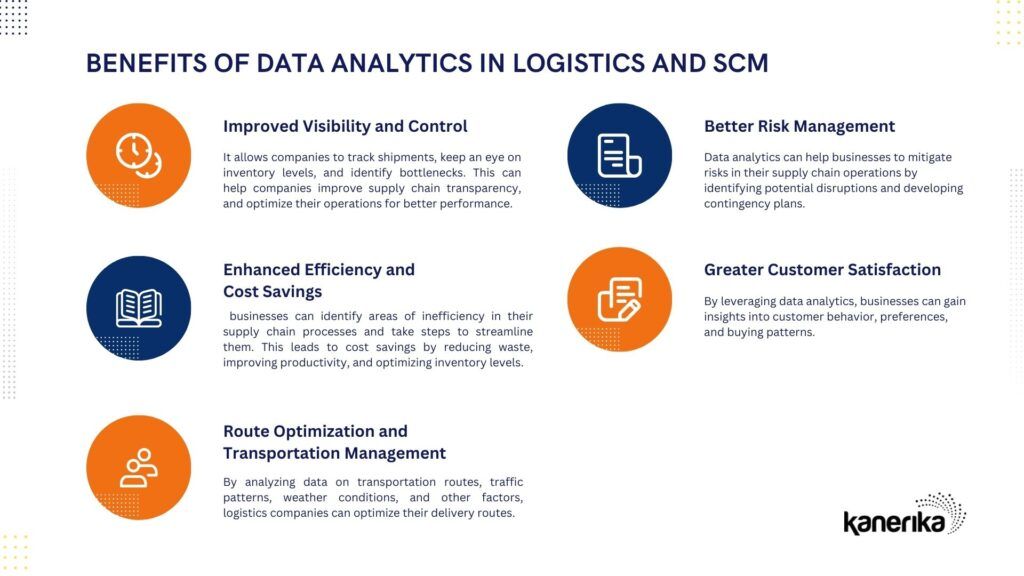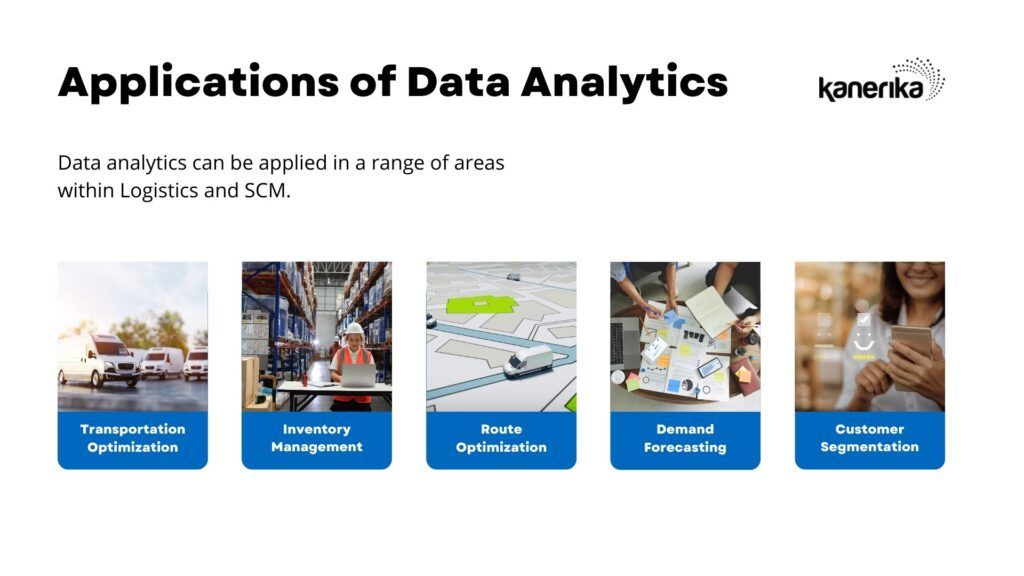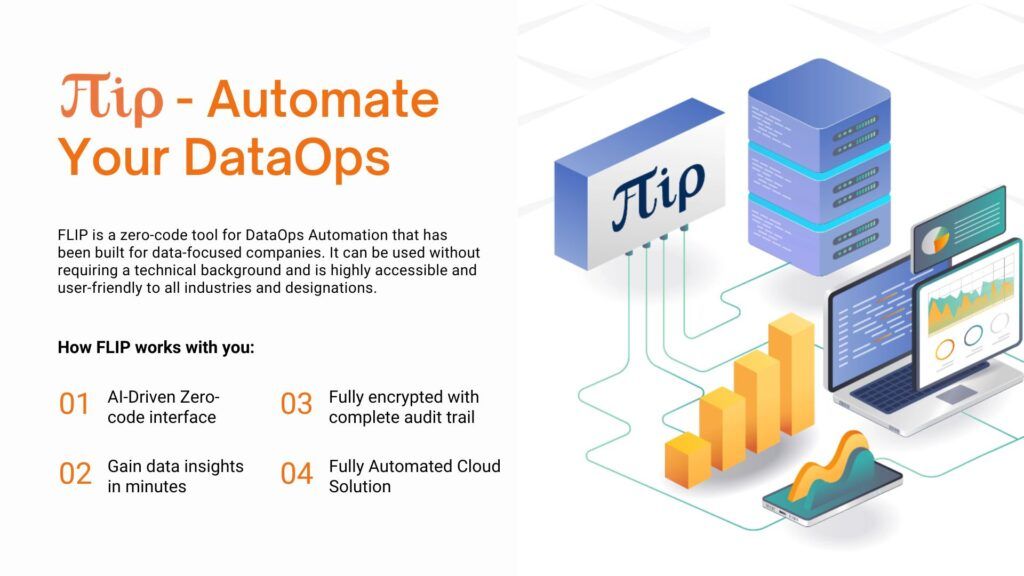Logistics and Supply Chain Management (SCM) is complex since raw materials and components are procured from around the globe. The market too is spread across different parts of the world. Harnessing the power of data analytics in logistics and supply chain management has given distribution companies the potential to enhance their capabilities across all aspects of their operations.
Logistics and supply chain management refer to the activities controlling the movement of goods and services. They consist of complex processes involved in the flow of goods from the point of origin to that of consumption.
Transportation, warehousing, inventory management, order processing, and customer service – all makeup logistics and supply chain management.
Data analytics in logistics and supply chain management can help businesses to optimize their logistics and SCM by providing real-time visibility into their operations and predicting demand.
Key Benefits of Data Analytics in Logistics and Supply Chain Management

Logistics and supply chain management benefit heavily from the use of data. By leveraging data analytics, businesses can optimize their supply chain processes and remain competitive in today’s fast-paced business environment.
Improved Visibility and Control
Data analytics can provide businesses with real-time information about their supply chain. It allows them to track shipments, keep an eye on inventory levels, and identify bottlenecks. This can help companies improve supply chain transparency, and optimize their operations for better performance.
Enhanced Efficiency and Cost Savings
By leveraging data analytics, businesses can identify areas of inefficiency in their supply chain processes and take steps to streamline them. This can lead to significant cost savings by reducing waste, improving productivity, and optimizing inventory levels. Additionally, it can guide companies to identify cost-saving opportunities. These can include renegotiating supplier contracts, optimizing transportation routes, and reducing inventory holding costs.
Route Optimization and Transportation Management
By running data analytics on transportation routes, traffic patterns, weather conditions, and other factors, logistics companies can optimize their delivery routes. This helps reduce transportation costs, improve delivery times, and enhance overall logistics and supply chain management efficiency. Real-time data analytics can also provide insights into the performance of different transportation modes, allowing companies to make informed decisions about carrier selection and mode of transportation.
Better Risk Management Via Data Analytics in Logistics & Supply Chain Management
Data analytics can help logistics and supply chain management businesses to mitigate risks in their supply chain operations by identifying potential disruptions and developing contingency plans. For example, it can predict the impact of natural disasters on the supply chain. Distribution companies can then develop strategies to minimize the impact.
Greater Customer Satisfaction
By leveraging data analytics, logistics and supply chain management businesses can gain insights into customer behavior, preferences, and buying patterns. This can help companies to optimize their product offerings, improve order fulfillment processes, and provide better customer service. You can also use it to predict demand and ensure that products are available when customers want them.
Applications of Data Analytics in Logistics and Supply Chain Management

Companies can apply data analytics in a range of areas within logistics and supply chain management (SCM). Let us see how it can integrate into SCM.
Transportation Optimization
Data analytics can be used to streamline transportation operations by providing insights into carrier performance, and transportation costs. Through better use of data analytics, logistics and supply chain management businesses can optimize their transportation processes, reduce delivery times, and improve customer satisfaction. You can also use it to identify the most efficient transportation routes and optimize shipping schedules.
Inventory Management
Data analytics can provide businesses with insights into inventory levels, demand patterns, and product availability. This can help companies to plan their inventory management, reduce excess inventory, and minimize stockouts. It helps businesses finetune their order fulfillment processes, and ensure that products are always available.
Route Optimization Using Data Analytics in Logistics & Supply Chain Management
It costs an enormous amount to transport goods across the globe. Data analytics can be used to plan faster delivery by identifying the most efficient routes. Additionally, it considers factors such as traffic patterns, delivery times, and fuel consumption. Businesses can reduce transportation costs, and improve delivery times.
Demand Forecasting
Businesses prefer a predictable schedule. Data analytics can forecast demand for products, allowing businesses to plan their production schedules. It offers insights for businesses to identify demand patterns, anticipate changes in demand, and adjust their operations accordingly. This can help businesses to reduce excess inventory, improve order fulfillment times, and cut costs.
Customer Segmentation Leveraging Data Analytics for Logistics & Supply Chain Management
Customer segmentation helps increase sales. For example, data analytics can segment customers based on factors such as demographics, buying patterns, and preferences. Through the use of data analytics, businesses can tailor their product offerings to specific customer segments, and improve customer satisfaction. Moreover, customer segmentation can also help businesses to identify areas for growth.
FLIP: The DataOps Tool That Simplifies Supply Chain Management

Do you struggle with managing your data pipelines and workflows in your business? FLIP, the cutting-edge DataOps tool, is here to change the game.
With FLIP, you can seamlessly integrate and transform data from various sources, automate your entire data pipeline, and monitor it in real time. This means you can spend less time manually managing your data and more time making informed decisions that drive your business forward. FLIP has been designed to augment your existing data analytics processes for logistics and supply chain management.
FLIP also boasts advanced monitoring and alerting features, ensuring that you’re always aware of any potential issues in your data pipeline. Plus, with its user-friendly interface and compliance with logistics industry standards, you can trust that your data is always secure and correct.
Ready to revolutionize your data workflows and take your business to the next level? Contact us to learn more about FLIP and how it can improve your business.
Sign up now for a free account today
FAQ
How does data analytics improve visibility and control in logistics and supply chain management?
Data analytics offers real-time information about supply chain operations, enabling tracking of shipments, monitoring inventory levels, and identifying bottlenecks. This leads to improved supply chain transparency and optimized performance.
How can data analytics contribute to greater customer satisfaction in logistics and Supply chain management?
Data analytics provides insights into customer behavior, preferences, and buying patterns, enabling companies to optimize product offerings, improve order fulfillment processes, and enhance customer service. It also aids in predicting demand and ensuring product availability when needed.
How can data analytics help businesses manage their inventory effectively in logistics and Supply Chain Management?
Data analytics offers insights into inventory levels, demand patterns, and product availability. This information aids companies in planning inventory management, reducing excess inventory, and preventing stockouts, thereby improving order fulfillment processes.
How does data analytics assist in demand forecasting for businesses in logistics and Supply Chain Management?
Data analytics predicts product demand, allowing businesses to plan production schedules and anticipate changes in demand. This leads to reduced excess inventory, improved order fulfillment, and cost savings in operations.
What is the significance of order processing in logistics and supply chain management?
Order processing is a critical aspect of logistics and SCM that involves efficiently handling customer orders, ensuring accurate deliveries, and timely order fulfillment, all of which can be improved with data analytics.
Can data analytics be used to optimize transportation and reduce costs in logistics?
Yes, data analytics can be applied to transportation operations to identify efficient routes, monitor carrier performance, and reduce transportation costs, ultimately improving cost-efficiency in logistics.
How does data analytics help in predicting demand in logistics and Supply Chain Management?
Data analytics analyzes historical data and trends to forecast future demand for products and services. This helps businesses plan their operations and inventory management to meet customer needs effectively.
How does data analytics contribute to route optimization and transportation management in logistics?
Data analytics analyzes transportation routes, traffic patterns, weather conditions, and other factors to optimize delivery routes. This reduces transportation costs, improves delivery times, and enhances overall logistics efficiency. Real-time data analytics informs decisions about carrier selection and transportation mode.
In what ways does data analytics aid in risk management for logistics and supply chain management?
Data analytics helps mitigate risks by identifying potential disruptions in supply chain operations. For instance, it can predict the impact of natural disasters, enabling companies to develop contingency plans and minimize disruptions.
Thank you for reading our new series of posts on FLIP. If you want to know more about Kanerika and FLIP, please write to us at [email protected].
Follow us on LinkedIn and Twitter for insightful industry news, business updates and all the latest data trends online.